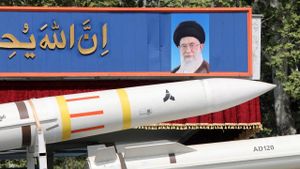On November 3, 2024, B-52 bombers and additional U.S. military forces marked their arrival in the Middle East amid rising tensions stemming from the conflict between Israel and Iran. These strategic deployments, coming just days after increased military actions, show the United States' commitment to supporting its allies and deterring potential threats from Iran and its allies.
The latest military maneuvers included deploying six B-52 Stratofortress bombers from the 5th Bomb Wing at Minot Air Force Base, North Dakota, to the U.S. Central Command area of responsibility. Major General Pat Ryder, the Pentagon Press Secretary, articulated the U.S. stance, emphasizing the need to prepare for any aggressive actions from Iran or its regional partners. "Should Iran, its partners, or its proxies use this moment to target American personnel or interests, the United States will take every measure necessary to defend our people," Ryder stated.
Concurrent with these movements, the Arleigh Burke-class guided missile destroyer USS The Sullivans set out for the fifth fleet area of operations. This deployment targets key regions including the Arabian Gulf, Gulf of Oman, Red Sea, and parts of the Indian Ocean. The USS Sullivans is fully equipped to intercept missile threats and engage with enemy forces, thanks to its advanced arming technology, including vertical launch anti-submarine rockets and Tomahawk missiles.
The U.S. Department of Defense's strategic deployment of these assets is not merely defensive; it also serves as a clear message of warning to Iran, which has been vocal about its intentions to retaliate against Israeli airstrikes. The situation escalated following Israel's military action on October 26, which saw airstrikes against Iranian military targets, purportedly linked to missile capabilities and attacks against Israel.
Recent intelligence suggests Iran might be planning more significant military operations against Israel, with warnings from U.S. officials highlighting potential reprisals from the Iranian military. Reports indicate Iran intends to deploy sophisticated weaponry not previously seen, heightening concerns over the stability of the region.
The U.S. has bolstered its military presence in the Middle East as part of its policy to defend not just American interests and forces but also the security of its allies, particularly Israel. The Biden administration has underscored its position through repeated messages of military support, including earlier deployments of the Terminal High Altitude Area Defense (THAAD) system to Israeli territory.
During the escalation of hostilities, Iran has launched missile attacks against Israel, most significantly the barrage of 200 missiles and drone attacks which reiterated Tehran's resolve following Israeli interventions targeting Iranian-linked groups. The continued bombings have prompted concerns about whether the conflict could expand, affecting U.S. troops and citizens stationed or traveling within the region.
These military deployments coincide with fundamentally changing security dynamics, with the Pentagon noting how swiftly it can adapt troop levels and military assets to respond to threats across global theaters. The USS Abraham Lincoln Carrier Strike Group, for example, originally dispatched for Pacific operations, was redirected to the Middle East to meet these developing security challenges.
The U.S. presence aims to serve dual functions—acting both as deterrence against Iranian aggression and securing regional stability to prevent long-standing conflicts from spilling over. While U.S. officials have expressed the desire for de-escalation via diplomatic channels, military preparedness remains at the forefront of their strategy. Every deployment is viewed through the lens of flexibility, ensuring U.S. forces are equipped and positioned to handle unexpected crises as they arise.
Meanwhile, the focus on ensuring both defensive readiness and proactive measures against potential threats from Iran's missile capabilities remains at the center of U.S. military strategy. Observers are closely monitoring the situation, as any sudden movements from either side could drastically alter the current state of affairs and lead to heightened armed conflict.
Past experiences highlight the precariousness of Middle Eastern engagements, as historic rivalries and alliances often dictate military actions. The arrival of these bombers may deter Iranian moves for now, yet the real test lies in the delicate balance of diplomacy and military power play exerted by the United States and its allies.
Overall, the increased military resources being deployed to the region serve as both strategic reinforcement against Iran and reassurance for U.S. allies like Israel amid broader geopolitical tensions. The real challenge will be maintaining this equilibrium without inflaming the already tenuous regional relationships.



